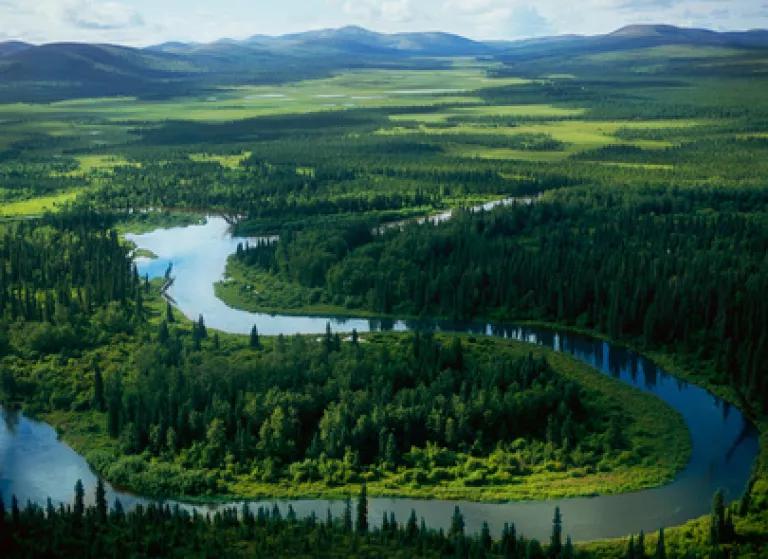The Pebble Partnership is at it again. This time they’re taking out an ad in the Washington Post claiming EPA has a “black box bias” when it comes to the Bristol Bay Watershed Assessment. What does that even mean?
EPA’s Bristol Bay Watershed Assessment is a sound, rigorous, scientific document that is the product of over three years of study. The agency decided to conduct a scientific study of the impacts of large scale mining on the Bristol Bay watershed after nine tribes, the Bristol Bay Native Corporation, commercial fishermen, sportsmen, business owners, chefs, jewelers, churches, conservation groups and others petitioned EPA to protect Bristol Bay from the development of Pebble Mine – a giant gold and copper mine proposed at the headwaters of Bristol Bay’s legendary salmon runs, which generate $1.5 billion annually, support 14,000 jobs, and sustain Alaska Natives and a vast array of wildlife.

EPA originally released its draft Watershed Assessment in May 2012, after holding numerous public meetings in the region. EPA subsequently considered 233,000 public comments (over 90% in support of the draft Assessment’s findings), consulted with tribes, and received input from a peer review panel of 12 independent scientific experts before releasing a second draft Watershed Assessment in April 2013.
The Pebble Partnership clearly does not appreciate EPA’s findings: EPA concluded that even in a best case scenario, without any leaks or failures, Pebble Mine would destroy up to 90 miles of salmon stream and eliminate up to 4,800 acres of wetlands – key habitat for salmon and other fish. But it cannot claim that EPA is “distorting the facts.”
Here are the facts:
- Bristol Bay is a national treasure. It is home to the world’s greatest wild salmon fishery, generating $1.5 billion annually and supporting 14,000 jobs. Salmon sustain native communities that have relied on subsistence fishing for thousands of years. Salmon also sustain a diverse ecosystem and wide range of wildlife, from brown (grizzly) bears and eagles to whales and seals.
- Pebble Mine would sit at the headwaters of Bristol Bay atop a seismically active saddle that separates two of the most productive salmon-spawning drainages on Earth: the Nushagak and Kvichak river systems. It would produce up to 10 billion tons of mining waste – 3,000 pounds per person on the planet – which, when exposed to air and water, will produce large quantities of sulfuric acid. This waste would be held in giant tailings ponds behind earthen dams taller than the Three Gorges Dam in China – all in a seismically active area. The waste – toxic to fish and other life – would have to be held forever.
Clearly Pebble cannot rely on the facts. Instead they are attacking EPA, trying to whip up some sort of anti-agency frenzy. But the bottom line is that Pebble Mine would be bad for Bristol Bay. Because of its location at the ecologically sensitive headwaters of Bristol Bay, the proposed Pebble Mine would present an unavoidable and unacceptable risk to the region, wildlife, salmon fishery, and Alaskan Natives.
At the request of the same mining companies who are now vilifying the agency, EPA extended the public comment period until June 30. Please use this time and speak out now to stop Pebble Mine.




